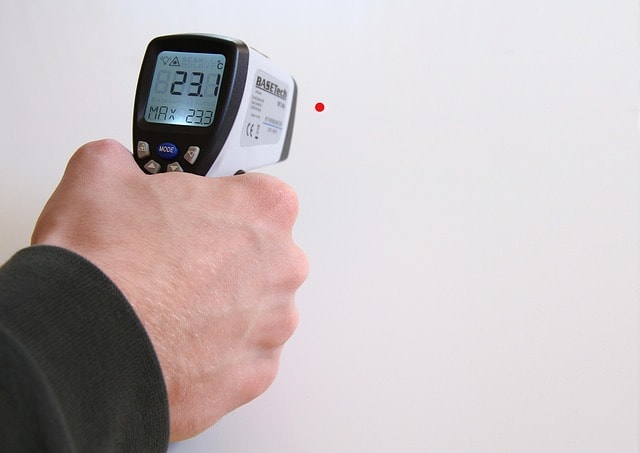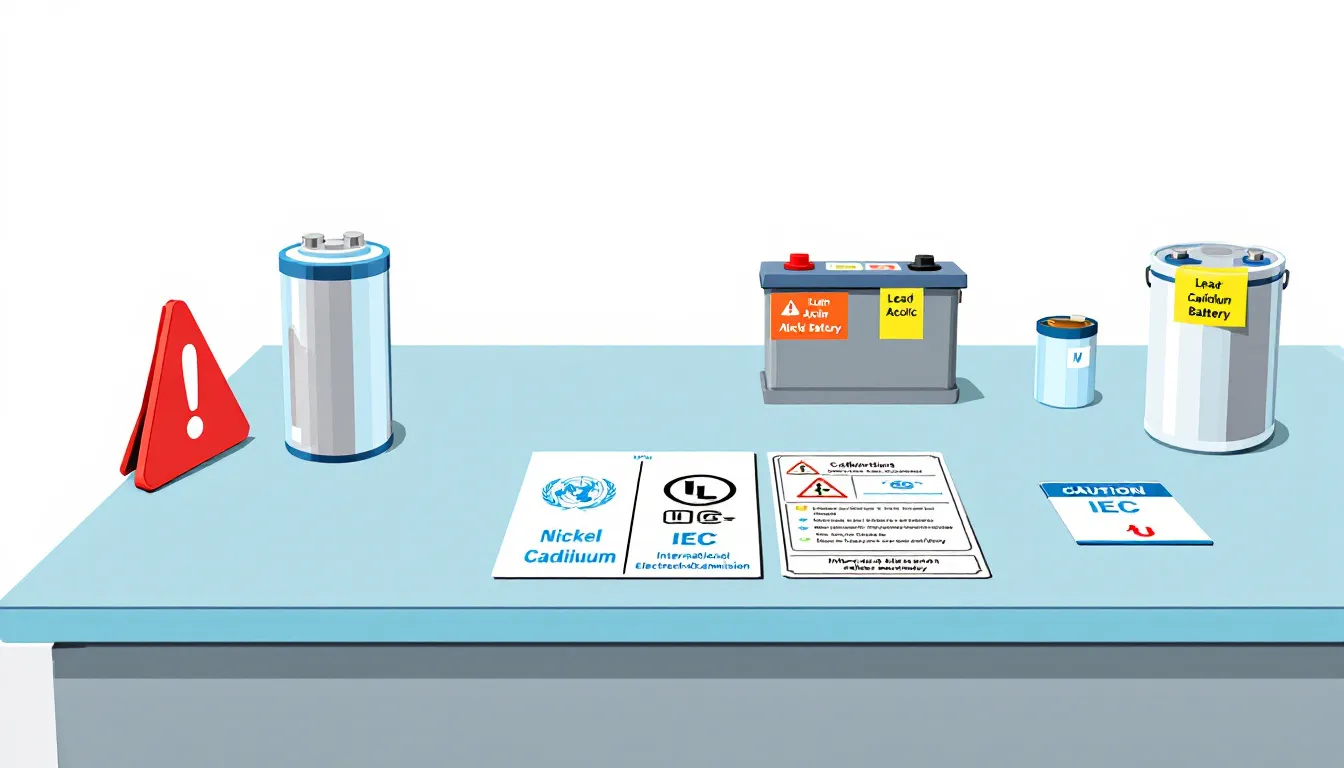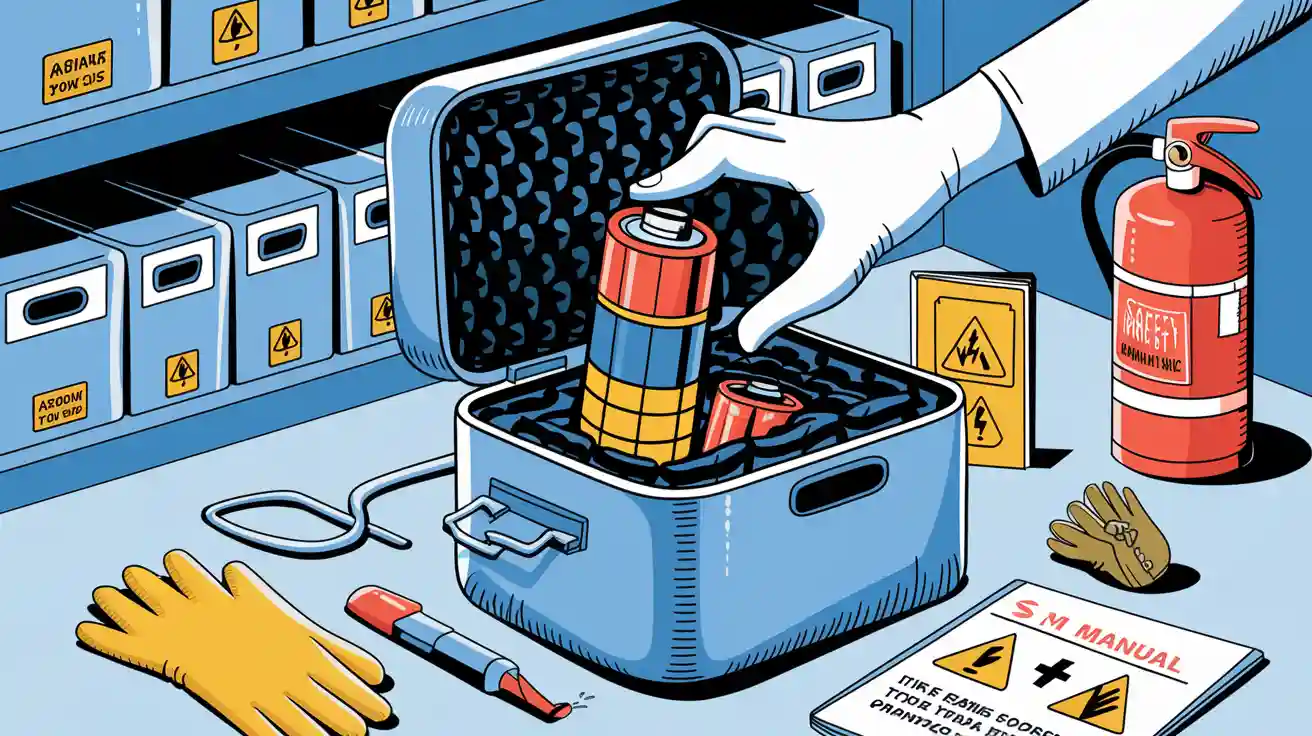Contents
- Key Takeaways
- Introduction to Telecom Batteries
- The Importance of Telecom Backup Systems
- Types of Telecom Batteries: Lead Acid vs. Lithium Ion
- Choosing the Right Battery for Your Telecom Network
- High Temperature and Arctic-Grade Batteries for Harsh Environments
- Reliability and Safety Standards for Telecom Batteries
- Cost-Effective Solutions for Telecom Operators
- Real-World Applications and Success Stories
- Innovations in Telecom Battery Technology
- Introduction to 5G
- Summary
- Frequently Asked Questions
Telecommunications batteries keep telecom networks running during power outages. They prevent service disruptions and are essential in emergencies by providing the necessary battery capacity to ensure continuous operation. In this article, we discuss the importance of telecommunications batteries, their types, and how to choose the right telecommunications battery for your needs.

Key Takeaways
- Telecom backup systems are crucial for maintaining communication during power outages, ensuring service continuity and minimizing customer dissatisfaction.
- Lithium-ion batteries offer superior performance, longer lifespan, and lower maintenance needs compared to lead-acid batteries, making them the preferred choice for telecom applications.
- Choosing the right battery for telecom networks involves evaluating compatibility, capacities, environmental suitability, and maintenance requirements to ensure reliability during emergencies.
Introduction to Telecom Batteries

Telecom batteries are a crucial component of telecommunication systems, providing essential backup power during outages to ensure reliable communication. These batteries are designed specifically for telecom applications, making them indispensable for maintaining the integrity and reliability of telecommunication systems, particularly in emergency call centers and other critical infrastructure.
The primary function of telecom batteries is to deliver long-lasting power backup during outages, making them an essential part of telecom backup systems. Their reliability and maintenance-free operation make them a cost-effective solution for telecom operators, who rely on these batteries to prevent downtime and ensure continuous service.
Telecom batteries are used across various industries, including telecommunications, to guarantee uninterrupted service. The telecom industry, in particular, depends heavily on these batteries to provide backup power during outages, making them a critical component of telecommunication systems. Designed to save space and offer high energy density, telecom batteries are an ideal solution for companies with limited space.
The use of lithium-ion batteries in telecom applications has become increasingly popular due to their high energy density and long service life. These batteries provide a reliable and cost-effective solution for telecom operators, ensuring that communication remains uninterrupted during power outages. The importance of telecom batteries cannot be overstated, as they provide the necessary backup power to ensure reliable communication during emergencies.
The Importance of Telecom Backup Systems

Backup systems in the telecom industry are vital yet often under-appreciated mechanisms that safeguard the continuous operation of telecommunication networks amid power disruptions. These systems facilitate seamless service and avert potential upheaval and erosion of consumer confidence. Power outages, which may stem from natural calamities, grid deficiencies, or equipment faults, pose significant risks to telecom networks. In such scenarios, it’s these backup setups that guarantee uninterrupted communication channels.
For example, emergency call centers depend on robust telecom backup solutions like those offered by Mitsubishi Electric’s UPS to remain active during power failures—this is crucial for maintaining public safety protocols. The ability to promptly recharge using modern lithium batteries means telecommunications services can swiftly bounce back after an outage occurs, ensuring ongoing functionality.
The impressive longevity of charge held by lithium batteries due to their low self-discharge rates empowers them with consistent readiness for emergency situations when needed most. This aspect is critical not just for upholding communicational links, but also in mitigating economic loss and preserving client loyalty amidst unexpected service breaks.
In essence, the presence of reliable telecom backups forms a cornerstone within our telecommunications infrastructure framework—they play an instrumental role in keeping telecommunication systems functional throughout emergencies thereby protecting dependable communication streams and overall network stability.
Types of Telecom Batteries: Lead Acid vs. Lithium Ion
To select an appropriate telecom battery, it’s essential to compare the attributes of lead-acid and lithium-ion batteries. Lead-acid batteries are one of the most common types of telecom batteries. Lithium-ion options boast considerably greater energy density than their lead-acid counterparts, resulting in a lighter weight and reduced size. The elevated energy density leads to an extended service life and enhanced performance for strenuous telecom applications.
Lithium-ion batteries excel with higher depth of discharge capabilities—up to 80% utilization of total capacity versus just 50% with lead acid varieties. Consequently, over their operational lifespan, they can deliver more power efficiently, which is advantageous for telecommunications use. Distinguishing themselves from lead acid versions, these batteries demand less upkeep. This reduction in maintenance fortifies the overall cost-efficiency intrinsic to lithium ion technology through time.
Although initially more economical upfront are the lead acid types. When contemplating longevity and ongoing service requirements – significant virtues emerge favoring lithum ion solutions. These advantages include fewer replacements as well as diminished care demands. Rendering them superior investments considering long-term expenses. For high-demand cycling needs within challenging environments often associated with telecom operations, durability offered by lithium ions frequently establish them as preeminent choices.
Choosing the Right Battery for Your Telecom Network

Choosing the appropriate battery for a telecom network entails various vital considerations. The chosen battery must align with the telecom equipment’s specific voltage and current needs to enable peak functionality. The capability of the battery to maintain power during outages is dependent on its capacity and recharging efficiency.
The operating conditions significantly influence how well batteries perform in telecommunications contexts. It’s imperative that these batteries are tailored to cope with particular climatic variables such as temperature fluctuation and moisture levels, guaranteeing effective operation under different scenarios. Lithium ion solutions like 48V 100AH units stand out due to their minimal weight and small size, making them suitable for areas where space is at a premium while also offering swift recharge times which prepare them promptly after any interruptions caused by power failures.
With advancements such as 5G technology elevating energy requirements within telecommunication networks, there is an escalating need for more competent electrical storage options. High-energy-density lithium-ion cells merged with uninterrupted power supply (UPS) frameworks provide steadfast support critical for streamlined communications necessitating compact deployments while taking into account life expectancy of these components along with factors surrounding effectiveness, upkeep routines, testing protocols and cyclical charging demands remains paramount.
To summarize it succinctly, when selecting an ideal battery solution specifically designed for use in telecommunication systems you should examine:
- Equipment compatibility
- Energy storage ability
- Aptness given environmental parameters
- Demands regarding maintenance
- Specific needs of the telecom application
Taking stock of all these aspects helps ensure that communication service providers have resilient infrastructures capable of tackling disruptions including loss of electricity hence safeguarding constant internet data connectivity thus lessening threats related to breaches in security measures.
High Temperature and Arctic-Grade Batteries for Harsh Environments

Batteries crafted for harsh climates offer dependable backup power even in severe conditions. Capable of functioning efficiently across a vast temperature range from -40°C to +65°C, these batteries maintain their performance capabilities when faced with the most strenuous circumstances. Arctic-grade variants are built to endure frigid temperatures without losing discharge capacity or performance quality.
Telecom batteries tailored for prolonged life spans under extreme thermal stress and long periods diminish the frequency of maintenance and deliver steady service. Compliance with MIL-STD-810H is common among these units, affirming their durability through extensive temperature fluctuations and ensuring robustness. As an example, Large Power’s offerings have undergone MIL-STD-810G testing to ascertain vibration tolerance, been assessed for corrosion resistance via salt spray examinations, and come enclosed in IP67-rated casings that repel dust and water ingress.
To bolster telecom systems’ reliability in adverse settings, high-temp as well as arctic-tier batteries integrate specific features like automatic self-heating pads activated at temperatures below -20°C and specialized low-freezing point electrolytes effective down to -40°C. Such attributes confirm consistent backup power provision amidst extremely cold environments.
Employing these uniquely purposed batteries secures uninterrupted operations imperative for sustained communication flow and operational productivity within challenging environmental extremes.
Reliability and Safety Standards for Telecom Batteries

To maintain effective performance under demanding conditions, it’s critical that telecom batteries conform to innovation, reliability, and safety benchmarks. For instance, they should comply with standards like MIL-STD-810G, which affirms their durability against mechanical impacts and extreme settings. Such protocols are essential for the dependability of telecom backup systems.
Certifications such as UL 1642 and UL 2054 assess the protective measures integrated into telecom batteries. These approvals confirm that the batteries can handle various risks safely while being utilized in practice. Notably, an IP67 rating signifies dust protection for these power sources along with temporary water immersion resistance—broadening their applicability across different scenarios.
Explosion-proof certifications guarantee the appropriateness of using telecom batteries in potentially explosive atmospheres where flammable gases or particulates might be encountered. High temperature battery variants often incorporate flame-retardant substances to curb thermal deterioration thereby boosting overall security aspects. Adherence to these robustness and safeguarding norms enables telecommunications providers to count on their emergency backup arrangements consistently delivering reliable and secure energy solutions when most needed.
Cost-Effective Solutions for Telecom Operators
Telecom companies are constantly on the lookout for cost-efficient solutions to sustain their operational effectiveness and economic viability. As a company dedicated to providing advanced energy solutions, the adoption of low-maintenance AGM and lithium-ion batteries substantially slashes long-term expenses within telecom infrastructures. By diminishing maintenance demands, these alternatives facilitate significant financial savings for telecom operators over extended durations.
Capable of withstanding thousands of charging cycles, these conventional batteries demand less frequent replacement and thus minimize costs over prolonged periods. Their durability positions them as an optimal choice for telecom providers aiming to balance budgetary constraints with the need for dependable backup power that boasts a lengthy lifespan.
By investing in such economical battery options, telecommunications firms can preserve service excellence without succumbing to hefty expenditures.
Real-World Applications and Success Stories
The telecom industry benefits immensely from the deployment of cutting-edge battery solutions, as evidenced by their crucial role in aiding telecom operators. UScellular, working alongside partners like MDI Access and employing the SUMMIT Series UPS systems for eco-friendly initiatives, managed to significantly slash costs while also securing government incentives. The alliance permitted UScellular to capitalize on considerable financial gains in conjunction with earning rewards from the government for adopting green practices.
In scenarios where continuous connectivity is paramount—especially during critical situations—it’s imperative that battery solutions are dependable to ensure seamless service across telecommunications networks. The strides made by UScellular exemplify how advanced battery technology can bolster both operational effectiveness and ecological stewardship within the realm of telecommunications.
These instances underscore why it is vital for those at the forefront of providing telecommunication services to invest in resilient and groundbreaking battery technologies tailored specifically to fulfill the unique requirements inherent within this sector.
Innovations in Telecom Battery Technology

In the telecom industry, advancements in battery technology are greatly improving the dependability and performance of energy storage solutions for backup power. Hydrogen fuel cells have emerged as a favorable option among these innovations, prized for their environmental benefits and operational efficiency. These cells deliver consistent power supply during interruptions, upholding the trustworthiness of telecommunications services.
Battery technologies such as Thin Plate Pure Lead (TPPL) boost overall functionality with faster recharge capabilities and enhanced tolerance to elevated temperatures. Refined production methods in batteries designed to withstand high temperatures diminish internal resistance, which translates to heightened efficacy and extended service life—a critical factor given the escalating energy requirements faced by contemporary telecom networks.
Progress has been made towards developing hybrid systems that integrate traditional battery storage with renewable sources of energy. Such systems afford a reduced spatial footprint while providing versatile application possibilities—characteristics exceptionally well-suited for deployment within telecom settings. Telecom operators adopting these cutting-edge technological solutions can assure both resilient sustainability and reliability in their auxiliary power configurations.
Introduction to 5G
The introduction of 5G technology has revolutionized the telecom industry, offering faster data speeds and lower latency, which are critical for modern telecommunication systems. 5G technology is designed to provide a reliable source of power, making it an essential component of telecom backup systems.
The benefits of 5G technology extend beyond just speed and latency. It offers reliability, cost-effectiveness, and environmental sustainability, making it an ideal solution for telecom companies. By providing backup power during outages, 5G technology ensures that telecommunication systems remain operational, which is crucial for maintaining continuous service.
The telecom industry relies heavily on 5G technology to provide backup power during outages, making it a critical component of telecommunication systems. The use of lithium-ion batteries in 5G technology has become increasingly popular due to their high energy density and long service life. These batteries enhance the reliability and efficiency of 5G systems, ensuring that telecom operators can deliver uninterrupted service.
5G technology is designed to provide a cost-effective solution for telecom operators, making it an ideal choice for companies looking to reduce costs while maintaining high performance. The importance of 5G technology cannot be overstated, as it enables telecom companies to provide faster data speeds and lower latency, which are essential for modern communication needs.
As the future of the telecom industry, 5G technology provides a reliable source of power and enables telecom companies to optimize their energy usage and reduce costs. By investing in 5G technology, telecom operators can ensure that their networks are resilient, efficient, and capable of meeting the demands of the future.
Summary
To ensure uninterrupted and dependable communication, as well as operational effectiveness despite power disruptions and similar difficulties, battery solutions for telecommunications are crucial. This blog post delved into the significance of telecom backup systems while surveying state-of-the-art developments in battery technology essential for maintaining continuous connectivity within the telecom sector.
It is a strategic imperative for telecommunication networks to commit to robust and cutting-edge battery solutions that greatly bolster network resilience and sustainability. Telecom providers can maintain formidable and trustworthy networks equipped to tackle any obstacle by selecting appropriate batteries, upholding safety regulations, and adopting progressive technological innovations.
Frequently Asked Questions
What types of infrastructure does Large Power’s battery systems support?
Large Power’s battery systems support critical infrastructure including the telecommunications industry, energy and utilities, and public infrastructure.
How are Large Power’s batteries designed for harsh environments?
Large Power’s batteries are specifically designed for harsh environments by being MIL-STD-810G tested for vibration resistance, salt spray-tested to ensure corrosion protection, and equipped with IP67 enclosures for dust and waterproof capabilities.
This rigorous design ensures their reliability and durability in extreme conditions, while providing superior energy storage capacity in a smaller footprint compared to traditional lead-acid batteries.
What features do Large Power’s arctic-grade batteries have?
Large Power’s arctic-grade batteries include self-heating pads that automatically activate below -20°C and are designed with low-temperature electrolytes to prevent freezing at -40°C.
These features ensure optimal performance and maintain a reliable connection in extreme cold conditions.
Are Large Power’s batteries explosion proof?
Large Power’s batteries are explosion proof, having passed Exic IIB T4 Gc standards for their standard 18650 cell, with some also achieving Atex certification.
This demonstrates a commitment to safety in potentially hazardous environments, which is crucial for maintaining reliable telecommunication services across various platforms, including cable, satellite, and fiber.
What is the minimum order quantity (MOQ) for custom battery inquiries at Large Power?
For custom battery requests at Large Power, which are essential for supporting phone, cable, and internet services, the minimum order quantity is set to no fewer than 1,000 units.





